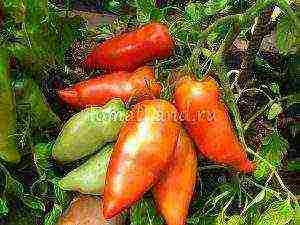Content
- 1 The best varieties of sors salad for planting in the country
- 2 The main varieties of culture - description and photo
- 3 The best varieties of salad for open ground
- 4 Salad composition
- 5 The benefits of salad
- 6 Decorative properties
- 7 Culinary properties
- 8 Leafy salads
- 9 Cabbage and half-cabbage salads
- 10 Romaine lettuce
- 11 Arugula
- 12 Watercress
- 13 Field salad
- 14 Iceberg
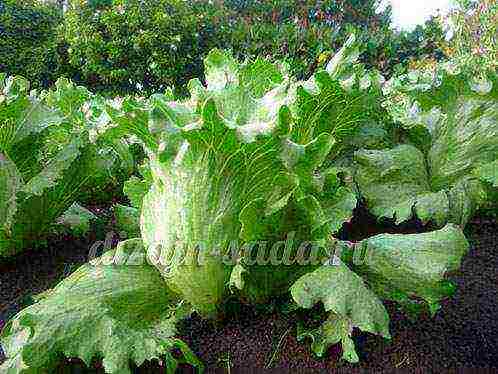
Any climatic conditions are suitable for growing lettuce. It is important that the place for sowing lettuce is sunny (otherwise nitrates_ will accumulate in the leaves and the soil will be loosened to a great depth. When grown in early spring, only early lettuce varieties should be used, later, summer ones, respectively.
Salad varieties with photos and descriptions, reviews
Iceberg lettuce
A new fruitful variety of crispy head lettuce. From the moment of germination to technical ripeness, 75-90 days pass. This variety is intended for spring and summer cultivation. Resistant to shooting.
The heads of lettuce are large, dense, weighing 300-600 grams. The leaves are corrugated, with wavy edges, juicy, bubbly, crispy, keep fresh for a long time. The taste is high.
Salad Sandwich
Excellent leafy variety of early ripening lettuce. It is grown in open and protected ground. Lettuce leaves are light green, tender, crunchy, with a high content of vitamins and mineral salts.
Lettuce Lettuce Sandwich is ideal for fresh consumption, making sandwiches, salads, decorating dishes.
Eurydice salad
A mid-season, half-cabbage variety of lettuce. Grown in open ground and film greenhouses. The rosette of leaves is medium-sized, semi-raised, compact, about 35 cm high, about 33 cm in diameter. The leaf is large, dark green in color, bubbly, with a wavy edge, of a crunchy consistency. Possesses excellent taste. The mass of an adult plant is 450 g.
Yield - 4.3 kg / sq. m. Sowing seeds directly into the ground in April - May.
Firebird salad
An early ripe variety of lettuce, the harvest of which can be harvested within 45-50 days from the moment of germination. The plant forms large rosettes of intense ruby red color, with delicate, crunchy leaves. Lettuce Leaves Firebird contain an increased amount of vitamins and mineral salts.
This variety of lettuce is suitable for year-round cultivation in open and protected ground throughout Russia.
Advantages of the variety: resistance to flowering, fast growth at any length of the day, excellent taste.
Odessa kucheryavets salad
Mid-season (68-75 days from germination to harvest), semi-cabbage type. The plant forms a loose medium-sized rosette, 24-32 cm in diameter, weighing up to 200 grams. The leaf is fan-shaped with a corrugated edge, crispy texture, excellent taste.
The Odessa kucheryavets is grown in open ground and in film shelters. For continuous harvest from June to autumn, sowing in open ground is carried out from April to August. The seeding depth is 1-2 cm.
For seedlings, lettuce seeds are sown in March-April, plants are planted in May-June.
Yield: 2.7-5.0 kg / sq.m. The variety is resistant to flowering.
Leaf lettuce Grand
Early ripening variety of lettuce. It takes 45 days from germination to harvest. The plant forms a large, juicy, light green leaf with pronounced curliness.
Grade Grand is distinguished by high uniformity of rosettes.
Advantages of the variety: resistant to blooming, marginal burns and necrosis.
Crispy Vitamin Salad
Medium early lettuce variety. It takes 38-45 days from germination to ripeness. The plant is compact, about 15-18 cm in diameter, with green, crispy leaves (openwork along the edge).
Lettuce variety Crispy Vitamin contains many vitamins and beneficial acids. It is recommended to sow several times during the season. Advantages of the variety: high yield, crispy leaf consistency, long shelf life, resistance to stalking and low light.
Kitezh salad
An early ripe variety of lettuce. Forms an erect rosette 20-25 cm high and about 25 cm in diameter. Leaves are medium-sized, oblong, reddish with a strong anthocyanin color, slightly bubbly, wavy along the edge, with incisions in the apical part. The consistency of the leaves is oily. The taste is excellent.
Yield lettuce Kitezh - 2.5 kg / sq.m.
Royal salad
High-yielding early ripening variety of lettuce. Forms large rosettes of corrugated leaves, light in the center and dark green at the edges.
It is characterized by a long period of consumer suitability, does not shoot, is very decorative. Recommended to grow in open and protected ground.
Gourmet salad
Early ripening variety of lettuce. The period from germination to harvesting is 40-45 days. Leaves are yellow-green in color, slightly wrinkled, with a wavy edge. The average weight of one plant is up to 200 grams.
Lettuce variety Lakomka is intended for growing in open and protected ground. Sowing outdoors from late April to mid-July. In non-heated film greenhouses, sowing / planting in the 3rd decade of April - 1st decade of May.
Landing scheme: 20 × 20 cm.
Lolo Biendo salad
An early ripe variety of lettuce. From the moment of germination to technical ripeness, it takes 40-45 days. Leaves are yellow-green in color, curly, fragrant, juicy and crunchy. The socket is compact, rounded, weighing 200-300 grams. The leaves are curly, fragrant, juicy and crunchy, yellow-green in color, delicate in taste, form a compact rounded rosette.
The average weight of one outlet is 200-300 grams. The variety is suitable for year-round cultivation in open ground and greenhouses.
Lollo San Salad
An early ripe high-yielding variety of lettuce. The period from germination to maturity is 40-45 days. The leaves are green, very decorative, corrugated. The rosette-head is loose, 15-20 cm in diameter.
The variety is resistant to shooting.
Lollo Rossa salad
The most popular variety of lettuce. The period from germination to technical ripeness is 40-55 days. The plant is tall, erect, 15-20 cm in diameter. The leaves are delicate, wrinkled, curly, light green in color with a wide reddish-pink edge.
Advantages of the variety: good taste, resistance to shooting, decorative. Lollo Rossa salad is often used to decorate flower beds.
Yeralash salad
Mid-season high-yielding variety of lettuce. The average weight of one plant is 150-200 grams.
Advantages of the variety: resistance to marginal leaf burn, high taste.
Moscow greenhouse salad
Early ripening variety of lettuce. It takes only 35 days from germination to harvest. The leaves are pale green, tender, juicy, with excellent taste.
The Moscow Greenhouse salad variety is ideal for fresh consumption, making sandwiches, salads, decorating dishes.
Cabbage salad Kolobok
New late-ripening cabbage variety of lettuce. From germination to technical ripeness takes from 55 to 75 days.
It is grown in open ground and in film shelters. Heads of cabbage are large, weighing up to 600 g. The leaves are red with white veins, very juicy, with a piquant taste.
Fresh heads of cabbage are rich in vitamins and minerals and are recommended for making salads.
Obzhorka salad
An early ripe variety of curly lettuce. It takes 40-42 days from germination to technical ripeness.
The plant forms a raised rosette with a diameter of 25-28 cm, the leaves are reddish, large, strongly wrinkled, juicy and tender. Socket weight up to 160 grams.
Leaf lettuce Naughty
An early ripe variety of lettuce. The period from germination to technical ripeness is 39-43 days. Rosette of green, bubbly, strongly wavy leaves along the edges.
The average weight of one outlet is 150-160 grams. The consistency of the leaves is crispy.
Robin leaf salad
Late-ripening variety of lettuce. Ripening period 50 days. Recommended for growing in various climatic zones, outdoors and in winter greenhouses.
The variety is resistant to flowering.
Leaf lettuce Fairy Tale
An early ripe variety of lettuce. Ripening period 46-49 days. The rosette of leaves is large, weighing up to 250 grams.
Advantages of the variety: resistant to shooting, fast growth at any length of the day.
Typhoon salad
A new mid-season lettuce variety. The leaf is large, green, slightly bubbly, wavy along the edge, with a crispy texture, juicy and delicate in taste.
Advantages of the variety: resistant to flowering, fast growth at any length of the day.
Truffle salad
Medium early salad variety. The leaves are tender, crunchy, corrugated, due to the reddish-burgundy edge, they look very impressive and are indispensable for decorating dishes.
The Truffle salad variety is suitable for year-round cultivation in the open field and in winter greenhouses.
Leaf lettuce Season of Wonders
An excellent early ripening variety of lettuce. The plant forms a large rosette, 25 cm high and 25-40 cm in diameter. The mass of one rosette is about 150 g.
The leaf is medium in size, dark red, wavy at the edge, juicy, curly, bubbly, crispy texture. The taste of fresh leaves is excellent, delicate.
Salad Mix Multivitamin
A wonderful mixture of fast growing salads, with a growing season of 40-45 days.
Plants form large rosettes of exclusively decorative leaves. The leaves are tender, crispy, juicy, with a good taste.
The mixture is suitable for year-round cultivation in open and protected ground.
We recommend purchasing seeds of the most delicious salads and other spicy herbs in the Sady Rossii online store.
What types of salad do you think are the most delicious? What varieties of lettuce without bitterness, with delicate leaves, would you recommend planting to our readers?
Your reviews and additions will help many gardeners choose the best varieties of green, red, leafy and head lettuce for planting.
If possible, attach a photo of the salad you have grown to your reviews. Thank you!
Mother Nature is pleased to present a good salad to our table to help fight the annual vitamin deficiency that plagues us on spring days. This fast growing annual is one of the main suppliers of useful ingredients. Crispy foliage plays the role of that extraordinary zest, which can harmoniously decorate a meat, fish, cheese dish. An important feature of greenery is that it can be cultivated all year round. And quite often, gardeners who have harvested an early harvest carry out repeated sowing of the seeds of this crop in open ground.
The best varieties of sors salad for planting in the country
Lettuce is an annual plant that tolerates cold weather very well. The seeds give their first shoots even at four to five degrees of heat, they survive small frosts without any problems. Mature plants are even more resistant and can withstand six degrees of frost in the garden and in the country
The root system is well branched, located in most cases at the very surface of the soil. The color of lettuce bushes ranges from light green to dark purple. By the time of ripening, a flowering stalk grows from the central part of the rosette.Later, inflorescences in the form of baskets are formed on it, numbering from fifteen small flowers. Flowering can last no more than a month.
In Russia, lettuce is very popular, known for its delicate and juicy leaves, short ripening periods. It is recommended to be eaten at any time of the year.
The culture is grown without much difficulty. It is enough to set aside one or two beds for it, on which you can collect several crops. During the summer season, lettuce bushes have time to grow and give seed.
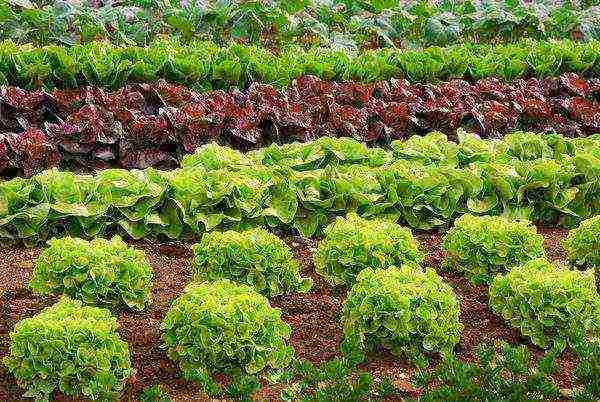 A bed with a variety of salad varieties
A bed with a variety of salad varieties
For open ground
Levistro is a late-ripening plant, the growing season lasts from fifty-five days to two months. Open type rosettes, medium size. The bush forms a head of cabbage, the weight of which reaches five hundred grams. There is no bitterness.The variety perfectly resists a number of diseases and dangerous parasites:
- downy mildew;
- internal necrosis;
- aphids.
It grows well in unprotected beds and greenhouses. For open ground, lettuce is recommended for cultivation from mid-spring to autumn.
Ruksai is another salad plant with late (up to fifty days) ripening periods. The rosette is open, loose, reaching twenty centimeters in height. Rounded foliage of a reddish hue, with a slight purple color. A head of cabbage weighs about four hundred grams. Taste signs are expressed by brightly spicy and nutty notes.
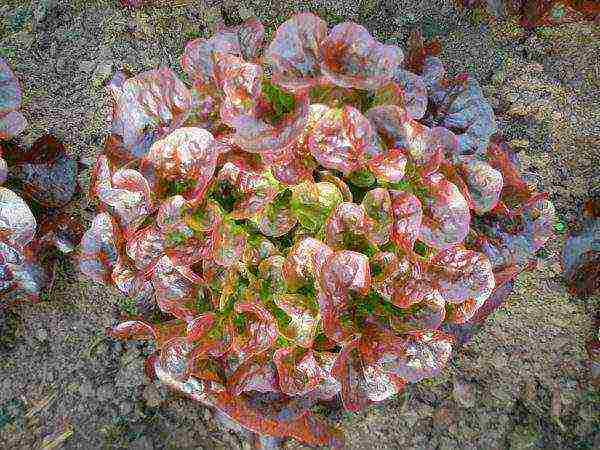 Roxay salad variety
Roxay salad variety
Gascony is a mid-early plant with a growing season of forty-five to forty-eight days. The rosettes are compact, reaching thirty-five centimeters in diameter. The average weight is five hundred grams. The variety perfectly resists flowering and the most common diseases. Perfectly cultivated in open field conditions.
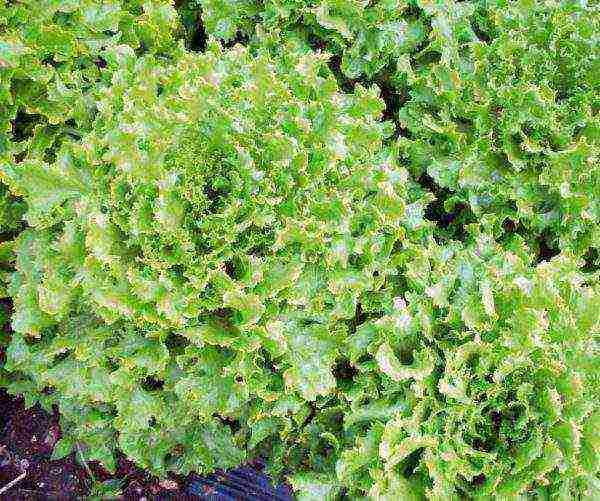 Gascony in the garden
Gascony in the garden
Early maturing leafy
The sandwich is a great early-ripening lettuce variety. It grows equally well in greenhouse conditions and in open beds. The foliage is light green, tender, contains a large amount of vitamins and minerals.
The plant is recommended for fresh consumption, is used in the preparation of sandwiches and salads, serves as a decoration for many dishes.
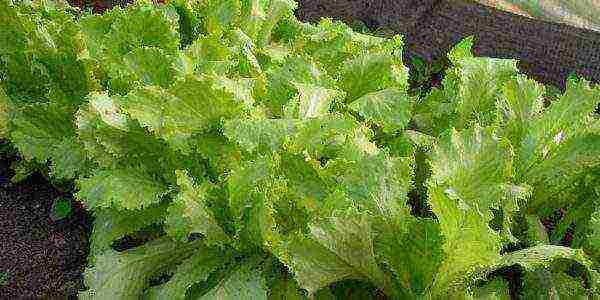 Growing sandwich leaves
Growing sandwich leaves
The firebird is an early maturing plant capable of producing a harvest one and a half months after sowing. The rosettes are large, ruby-red, the foliage is tender, crispy. The foliage contains many vitamins and minerals.
Grand - early ripening, yields a harvest forty - forty-five days after the appearance of the first shoots. The foliage is large, curly, juicy, the rosettes are highly even. The variety is known for its resistance to 6.
- flowering;
- necrosis;
- marginal burns.
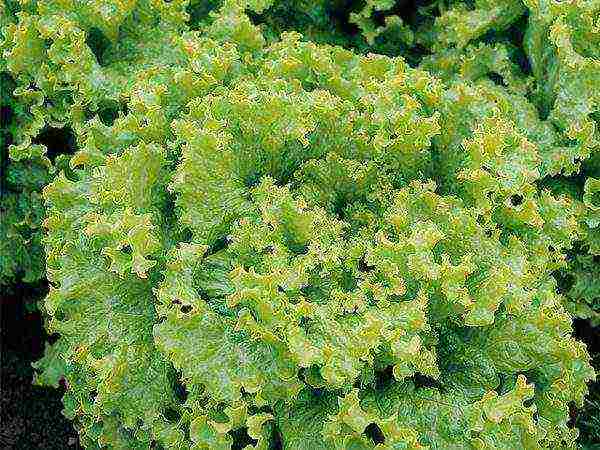 Lettuce grant
Lettuce grant
Kitezh is an early ripe salad plant, forming upright rosettes, the height and diameter of which reaches twenty-five centimeters. The foliage is medium in size, oblong, reddish in color. The wavy edges have small cuts in the apical parts. The taste of the salad is excellent, the yield reaches two and a half kilograms from one square meter of the garden.
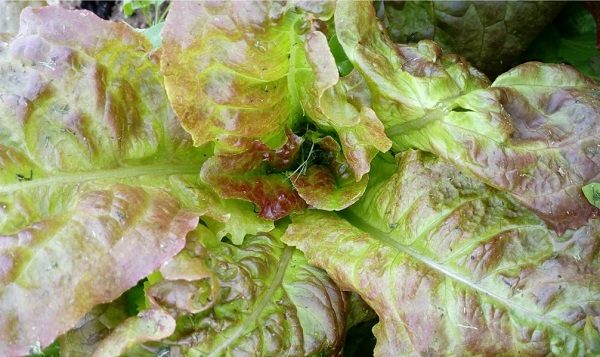 Growing kitezh
Growing kitezh
No bitterness for the garden
Lollo bionda is considered one of the most popular and beautiful salad types. The foliage is soft, goes well with hot dishes, sauces, baked vegetables, fried meat. It can be a good decoration for any dish or garden.
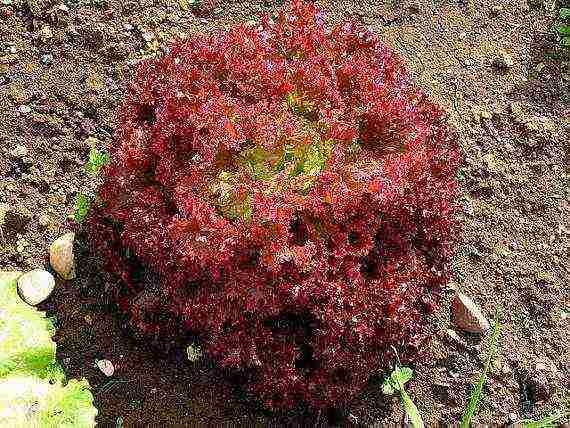 Lollo bionda
Lollo bionda
Batavia - includes a number of varieties, united by common features:
- bodice;
- risotto;
- grini;
- fanley;
- country house;
- jumbo;
- Prague citizens.
The rosettes are large, semi-spreading, the foliage along the edges has a slight waviness. The salad is tasty, slightly sweetish, perfectly complements meat dishes. Recently, the variety has been popular with many gardeners.
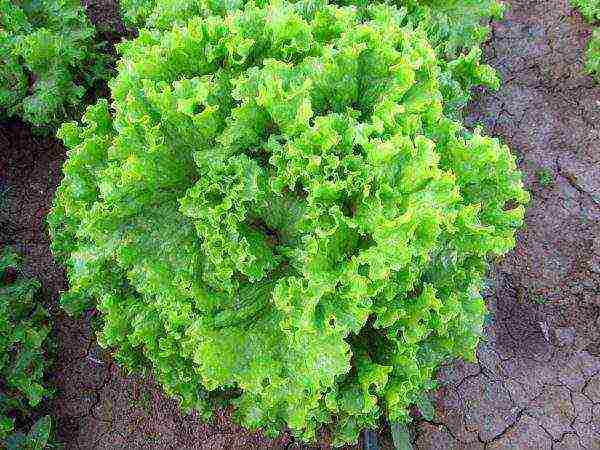 Batavia variety
Batavia variety
Oak-leaved - owes its name to the appearance of foliage. The plant is recognized by its color shades and taste, characterized by the presence of nutty notes. It is a great addition to hot salads, appetizers, fish dishes. Due to the increased sensitivity of foliage to temperature extremes, lettuce should not be stored for more than a few hours.
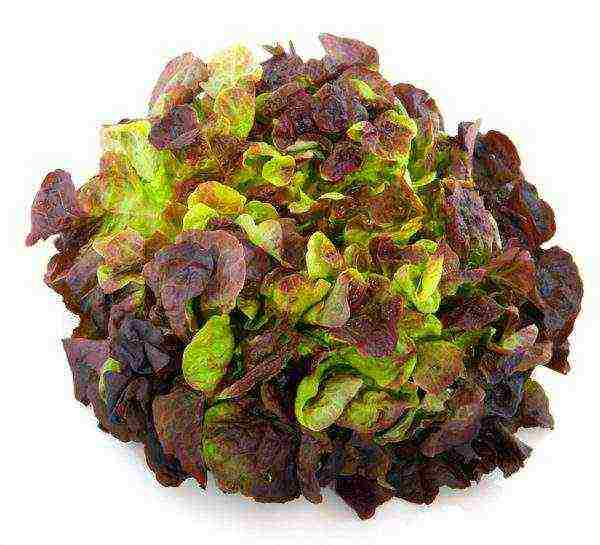 Oaky view
Oaky view
Corn - forms small leaves of a dark green hue, creating rosettes. The taste is sweetish, with nutty notes, a slight spice is felt. You can plant in the country or on the balcony.
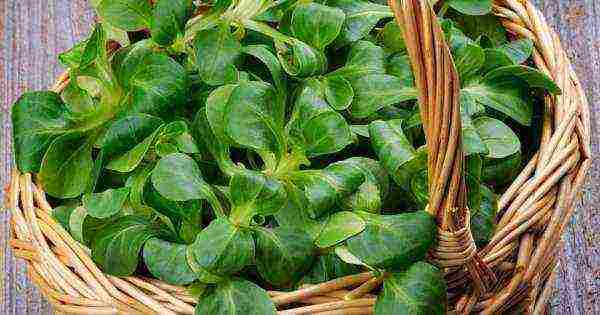 Unusual root, pre-collected in the basket
Unusual root, pre-collected in the basket
Oily - varietal variety of head lettuce. The leaves are smooth and oily to the touch due to the high amount of vitamin E. This salad was previously grown for oil. The foliage is juicy, with a sweetish aftertaste.
It is recommended not to cut them with a knife before use, but simply to tear them with your hands.
The salad is considered an unpretentious plant; it does not have any special requirements for growing. Having determined the most suitable varieties for yourself, you can plant annually and have several harvests of plants enriched with vitamins and other useful components.
Lettuce leaves are an excellent raw material for preparing delicious fortified dishes. Today, there are hundreds of species and varieties of this crop, so choosing seeds for planting can be a difficult task for the gardener or farmer. Consider the best lettuce varieties for open ground - a photo with a description.
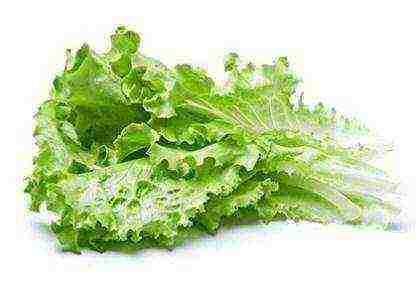
See also: Features of growing early cabbage in the open field
The main varieties of culture - description and photo
The salad is divided into the following groups:
• Leaf salad. Forms only leaves, which may have even and incised edges. The cultivation of this type of culture can be carried out in several stages. The minus of lettuce is that it cannot be stored for a long time.
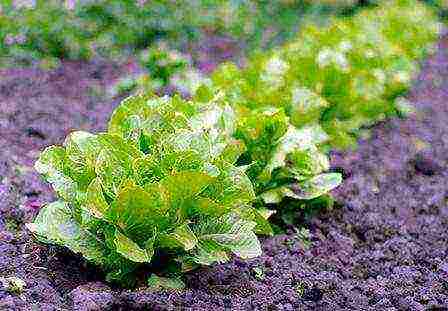 In the photo foliage salad
In the photo foliage salad
• Breakdown salad. It has a stem covered with delicate leaves with a wavy edging. The advantage of this variety is the ability to gradually harvest the leaves.
Breakout salad outdoors
• Stem salad. Consists of a fleshy stem and coarse leaves. Both are eaten. These varieties are little known to Russian gardeners. The main positive difference is high yield.
In the photo, a stem (asparagus) salad, rare for our summer resident
• Roman salad. This is a group of cabbage and semi-cabbage salads with excellent taste. Rarely grown by Russian gardeners. Rough oval leaves grow on a vertical rosette.
Roman salad in the garden
• Cabbage salad. The leaves of the varieties of this group are tough, but juicy and oily. Heads of cabbage can be of different sizes.
In the photo, head salad
The best varieties of salad for open ground
Let's move on to considering specific varieties of each type of salad, recognized as the best among gardeners. These are the tastiest and most productive varieties that do not require special care. We have prepared for you not only the names and descriptions of each of them, but also illustrative photographs that will help you with the choice.
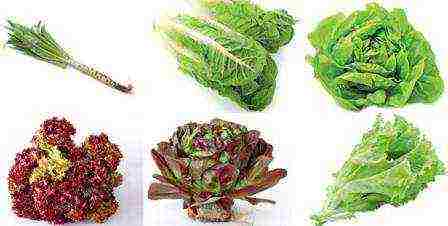
Lettuce for exhaust gases - favorite varieties
• Excitement. Highly decorative variety. Almost never gets sick. Gardeners and farmers in the description note its excellent taste and high marketability.
• Kudryavets Odessa... An excellent variety of salad, known to many summer residents. Resists color well. The leaves are juicy and firm.
• Bona. A variety of medium-ripening culture with a large rosette. It is appreciated for its excellent taste and the ability to harvest a rich harvest. It is planted in open ground in spring or summer.
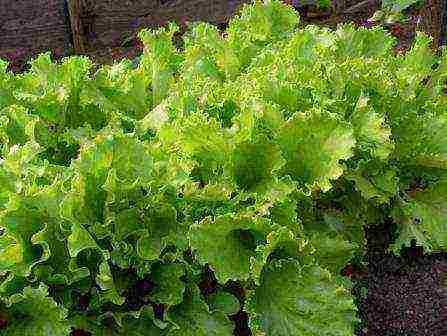 In the photo, Curly Odessa salad
In the photo, Curly Odessa salad
• A sandwich. Ideal salad for sandwiches according to taste. It is appreciated for its increased vitamin and mineral composition.
• The ball is crimson. The variety is characterized by very juicy wavy green leaves with raspberry blotches.
• Kitare... A new variety with a high degree of disease and shoot resistance.
• Lollo Rosa... An incredibly tasty variety that can be used as a decorative element.
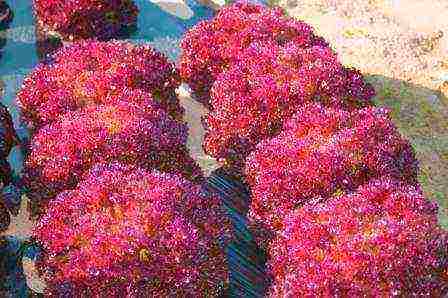 Lollo Rosa variety in the open field
Lollo Rosa variety in the open field
• Ruksay... Late-ripening lettuce 20 cm high. Leaves are oily, slightly purple. The maximum weight is 400 g.
• Levisto. A plant with slightly curly, sap-filled leaves. Excellent resistance to diseases and aphid attacks. It develops well in open ground and shelter.
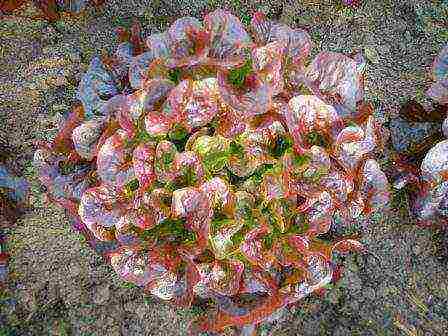 Open field salad variety - Ruksay
Open field salad variety - Ruksay
Breakout salad for exhaust gases - popular varieties
• Abracadabra. A high-yielding variety with smooth, cut, oily leaves. It survives unfavorable conditions well.
• Ballet. A variety of lettuce renowned for its resistance to cold and low light conditions. Can lie for a long time without loss of quality. Suitable for spring cultivation in open and protected ground.
• Mercury. Mid-season variety with large reddish leaves and excellent taste characteristics.
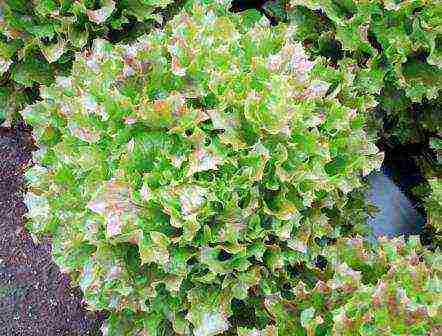 Popular variety of Canyon salad: the maximum weight in the description is 700 g
Popular variety of Canyon salad: the maximum weight in the description is 700 g
• Canyon. Mid-season variety with wavy and cut leaves. Disease resistant salad. It tastes like the head varieties. The maximum weight is 700 g.
• Barbados. The leaves of the variety are dark red, folded. For outdoor use only.
• Gascony. A medium early variety of open field lettuce with wavy and heavily cut leaves. Protected from disease. The maximum weight is 550 g.
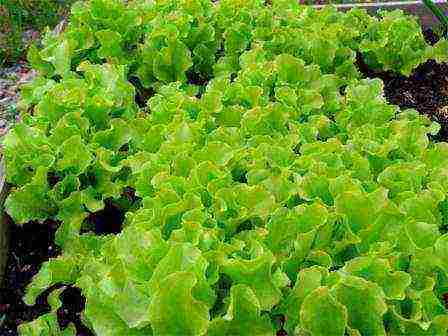 Gascony variety
Gascony variety
Stem salad for exhaust gases - the best varieties
• The driver. A plant with gray-green leaves not dissected along the edges. The variety of lettuce has a high yield.
• Svetlana. Mid-season variety. The total weight of one plant (leaves + stem) is 800 g. The crop can be stored for a long time.
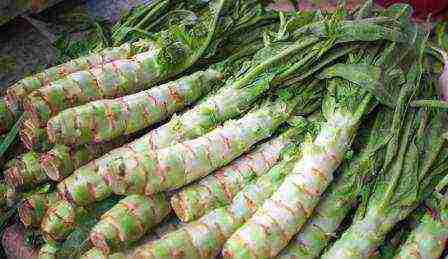 Svetlana is a variety of stem salad, which, judging by the description, can be stored for a long time
Svetlana is a variety of stem salad, which, judging by the description, can be stored for a long time
Roman salad for exhaust gas - recommended varieties
• Dandy... Late-ripening variety with dense, low-bubbling compacted leaves with smooth edges. Resistant to color and temperature changes.
• Scarb. One of the most popular new varieties. Differs in high marketability and drought resistance.
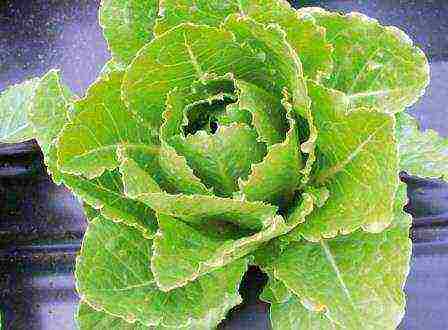 In the photo, a salad of the Dandy variety
In the photo, a salad of the Dandy variety
• Parisian... The socket is large and raised. Head of cabbage is loose, oval. It is best to grow this variety outdoors during the summer and autumn period.
• Balloon. Large rosette with dense leaves.
• Roger. Produces high quality green crispy leaves.
• Limpopo. An early variety, resistant to flowering. Leaves are slightly wrinkled, tender.
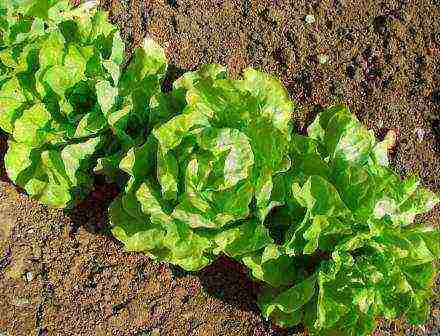 Limpopo - a variety of salad for open ground
Limpopo - a variety of salad for open ground
Cabbage salad for exhaust gases - the best varieties
• Stone head. One of the best varieties, characterized by a small and very dense head - weight up to 100 g. Wavy, uncut leaves.
• Large cabbage. The leaves are very tasty, wavy, bubbly, dense. Growing recommendation - outdoors in spring. The weight of a head of cabbage is 500 g. It is stored for a long time.
• Major. High yielding variety with light green leaves surrounded by a red border.
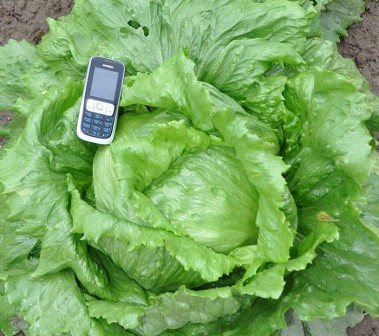 In the photo, iceberg-type cabbage salad for open ground
In the photo, iceberg-type cabbage salad for open ground
• Iceberg. New variety resistant to shooting with excellent taste.
• Etty. Ripening period is average, the head is dense and large. Growing outdoors in any part of the sowing period is advised.
• Dude. An early vitamin variety that forms a half-cabbage.
• Senator... The variety is high-yielding, unpretentious, heat-resistant, with excellent taste characteristics.
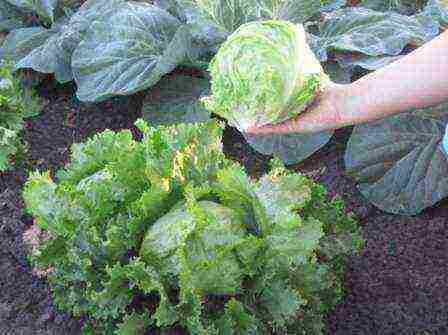 Head salad Senator
Head salad Senator
In the process of choosing a variety of salad for open ground, photos with a description from this article will help you. Do not spare your efforts on this most valuable culture, which will give you a lot of vitamins and minerals. Salads, sandwiches, vegetable dishes will become tastier and juicier with the nutritious leaves of this vegetable plant. The main thing is to choose the right variety that will satisfy the needs of the family.
Watch the video: All about growing lettuce: varieties, seedlings, planting and care
Salads have long taken pride of place on almost every table.And for good reason. Healthy greens are good not only for decorating dishes, but also serve as a source of minerals and vitamins. Salads have also won recognition among gardeners, since they conquer not only with a variety of taste, but also with their decorative properties. If we are talking about the usefulness of this amazing plant, we will consider all its properties.
Salad composition
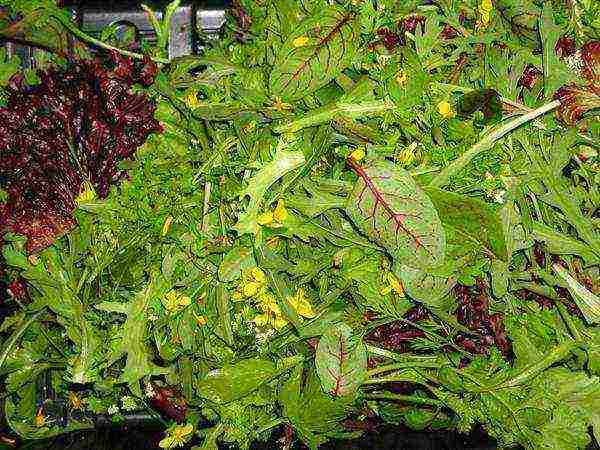
The salad is valuable because it is a low-calorie vegetable, 100 g of salad contains only 15 Kcal. It contains no heavy fats and carbohydrates. Salad varieties are varied, but everyone is valued for their vitamin and mineral composition, which includes vitamins of groups A, B, C, E, H, P, as well as iron, phosphorus, selenium, iodine, sulfur, calcium, beta-carotene and a few dozen more useful elements. Lettuce is a source of fiber and protein.
The benefits of salad
Including salads in your diet is a great opportunity to lose weight, as well as balance your diet for various diseases. Depending on the variety of salads, their vitamin composition changes. But they all improve the functioning of the gastrointestinal tract, have a beneficial effect on vision, regulate salt balance, and stabilize the heart and nervous system. The unique composition of the lettuce enhances lactation, increases the level of red blood cells, removes toxins, lowers cholesterol and improves sleep.
Varieties of spicy salads are distinguished by their antiseptic properties, have a diuretic effect and strengthen the immune system. Not spared the amazing properties of the salad and the fair sex, as they contribute to the maintenance of beauty. They are indispensable in cosmetic procedures - lotions, masks, as they perfectly tone and moisturize the skin, prevent hair loss.
Decorative properties
Salads will truly adorn any garden. You can grow different varieties of salads not only on your own, but also for decorative purposes:
- creating flower beds;
- ridges and labyrinths, in which lettuce is formed with spirals, ornaments and patterns;
- use as a plant separator;
- as a border, and also introduced as a source of outlandish color in mixborders;
- grown in pots on terraces, balconies and window sills.
Culinary properties
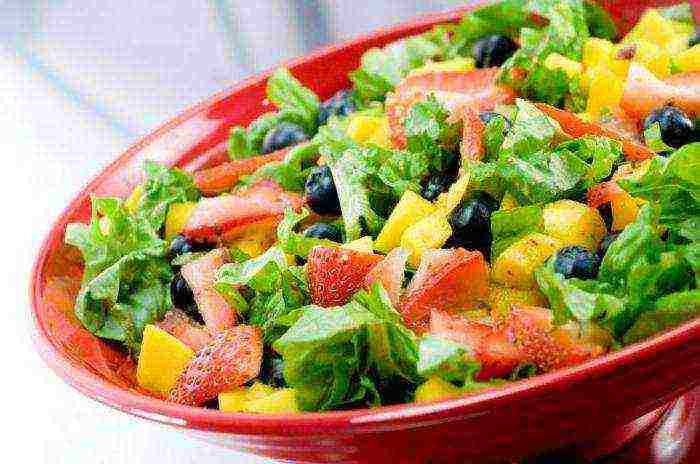
Of course, the value of a salad is not limited only by its low calorie content. Due to its taste, it is used fresh in the preparation of snacks, it is good just with vegetable oil and with any sauce. Stewed lettuce leaves, of course, lose most of their vitamins, but such dishes differ in their taste.
Salad is used to decorate vegetable, fish and meat dishes, as an addition to sandwiches. In some national cuisines, salad is used as a dessert, sprinkled with lemon juice and yogurt.
Leafy salads
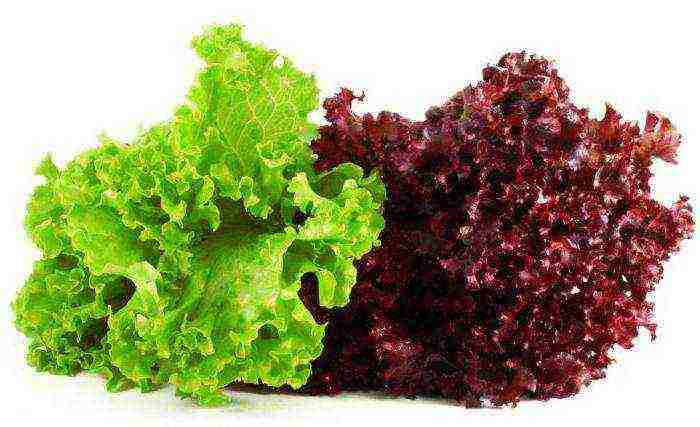
Salads of this type are distinguished by delicate leaves, which come with even and patterned edges. The color of the leaves is varied - from light green to brown. Regardless of the type of lettuce, the taste is slightly bland and so delicate that it is not cut, but carefully torn. Among gardeners, this type of salad is very common, since it is unpretentious in care, and it is sown from the beginning of April (under the film) to August.
Salads of this type are cold-resistant, they need bright sun. They love light, loose soil. Lettuce is planted with row spacing from 20 to 30 cm. The seeding depth is not more than 1.5 cm. After 2 weeks, the first shoots appear. It is recommended to cover green salads in the early sowing period. Varieties of this species are thinned out after the appearance of the third true leaf, since the plant grows strongly.
The salad needs to loosen the soil. Starting from the second week, weeds are removed and, as an earthen crust forms, they are loosened. Watering is carried out carefully, trying not to stain the leaves. Therefore, it is recommended to mulch the soil in order not only to keep the crop clean, but also to retain moisture.Harvested simultaneously with thinning or selectively, removing the entire plant. The best salad varieties:
- Lollo Rossa presents several varieties, also called Coral Salad. Lollo Rossa has a slightly bitter nutty flavor. The leaves are soft and give the plant volume. This variety is good both on its own and in combination with sauces, hot appetizers, baked vegetables, fried meat.
- Oaklif or oakleaf lettuce lives up to its name by the appearance of its leaves, which are very similar to oak leaves. This is one of the memorable salads for its color and delicate nutty taste. Oaklif goes well with avocado, mushrooms, smoked salmon. They also add it to hot salads and appetizers. Croutons and croutons acquire an interesting taste with this salad. All sauces are suitable for salad dressing, with the exception of spicy sauces, so as not to interrupt Oaklif's delicate taste.
Cabbage and half-cabbage salads
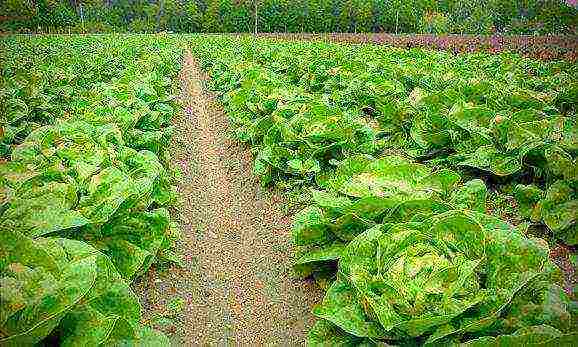
Salads that form rosettes of leaves are called cabbage salads. They are characterized by oily crispy greens. They taste as tender as leafy salads. They are used in cooking in the same way.
For harvest in June, salads are grown in seedlings. The seeds of the variety are sown on it in early March. It is sown in open ground before winter and early spring.
Head salads are preferred by fertile loams and sandy loams. Heads of cabbage form only in good lighting. They prefer a temperature not higher than 20 degrees. Before sowing the seeds, the soil is thoroughly watered and the seeds are scattered to a depth of no more than 2 cm. After the appearance of 2 full-fledged leaves, the plant is thinned out.
Salads of this type need regular watering. 2 weeks after thinning or planting seedlings, the head lettuce is fed. The harvest is harvested depending on the maturity of the heads of cabbage: they should be about 8 cm in diameter. Head lettuce is quite common, its varieties are numerous. But I would like to highlight one.
Frize is a curly lettuce with light green around the circumference and white-yellow leaves in the center. Recently, this type of salad has become more and more popular, this is due to its taste with a piquant bitterness and decorativeness. In cooking, it is practically not used as an independent dish, usually in combination with other types of greens. The tickling bitterness of Frize salad perfectly complements fish and shrimp dishes, cold cuts and cheese. Ideal with mushrooms and bacon.
Romaine lettuce
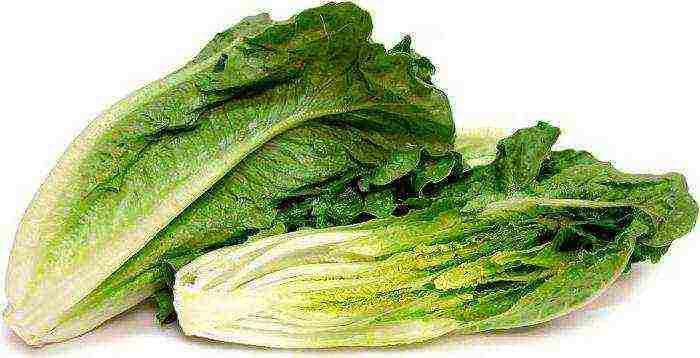
This type of salad is known as Roman salad. It is easy to recognize it by the shape of the head of cabbage. Elongated, almost smooth leaves, arranged vertically. Romaine forms large heads of cabbage with dark green leaves. In cooking, they are used not only in everyone's favorite Caesar salad, but also as an addition to sandwiches, snacks, sandwiches.
Romaine is cultivated mainly as an autumn salad, sowing seeds in mid-July. Prefers loams and intense lighting. The seeds are buried in the soil by 1.5 cm. After the appearance of several true leaves, the crops are thinned out. It is recommended to soak the seeds before sowing.
All Roman care consists in regular watering and obligatory weeding. Harvesting can be started 70 to 80 days after sowing. This species is neither cabbage nor lettuce, varieties of varieties (hybrids) - Remus, Wendel, Pinocchio, Mishutka, Kosberg, Parisian green.
Romaine has a nutty flavor, slightly spicy and sweet. Delicious on its own, especially with yoghurt dressing. It is used in combination with other types of salads, in hamburgers, sandwiches. Add to vegetable sauté and puree soup.
Arugula
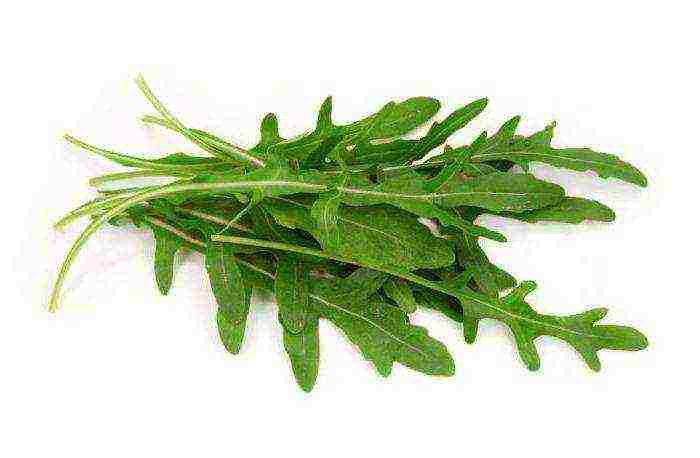
Arugula leaves look like dandelions. But it is absolutely inimitable in its taste: a spicy nutty, slightly pungent taste. It is used as a seasoning for many hot dishes. Excellent in combination with cheeses, vegetables, sauces and dressings.
Arugula grows fast enough. It can be sown from early April to August. Arugula is sown every 15 days.Not picky about the soil. But she needs intense lighting and a temperature of about 18 degrees. It is grown both in greenhouses and in the open field. Arugula seeds are slightly buried in the soil. They germinate very quickly, after about a week the first shoots appear. The crop is harvested in 2 weeks.
Arugula loves moisture, the taste of the plant depends directly on watering. It is recommended to spray it. To retain moisture, you can mulch the plantings. The best varieties of salads: Rococo, Emerald, Corsica, Sicily.
By the way, as an additive to okroshka, arugula will add a piquant touch to this dish. It goes well with fish dishes and seafood. Here she, perhaps, has no equal. Arugula is also used in pickles. Warming up arugula for a couple of minutes in a pan with garlic, salt, pepper and olive oil - you get a sauce that will make any side dish flawless.
Watercress
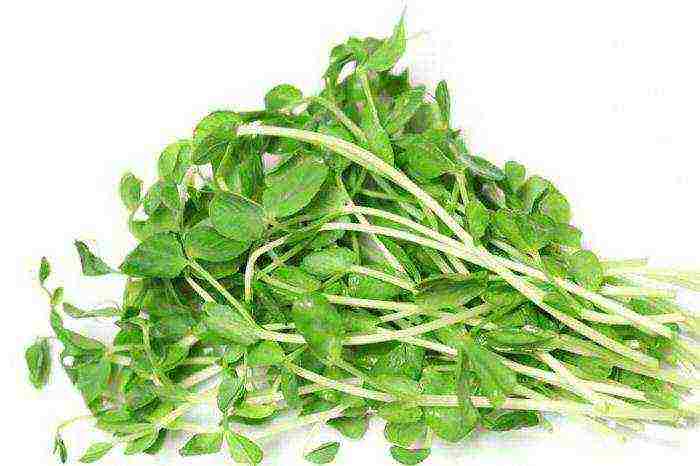
Miniature type of salad. It is famous for its decorative properties, but, above all, it gained popularity due to its unique mustard taste. A bright, aromatic and fast-growing salad can, in terms of its taste, compete with arugula.
The first sowing of watercress is carried out in early April. And they finish seeding every 10 days. Since watercress does not like heat and long daylight hours, you can take a break from crops in summer. Since in such conditions, the watercress will "go away" in color.
The necessary conditions for good growth are light soils and partial shade. The seeds are buried in the soil by 1 cm. It sprouts in a few days. After 3 true leaves, seedlings are thinned out. When sowing early, it is recommended to cover the plant with a film.
Watercress is a low-growing plant, for the purity of the foliage, it is recommended to mulch the soil. Watercress loves moisture, gratefully gives off juicy tender greens when sprinkled daily. The crop is harvested in 2 weeks. The best varieties: Dansky, Amur, Vest.
In cooking, watercress is widely used. This is a great side dish for game and chops. Excellent taste is given to butter for sandwiches, a spicy addition to cheese snacks and salads.
Field salad
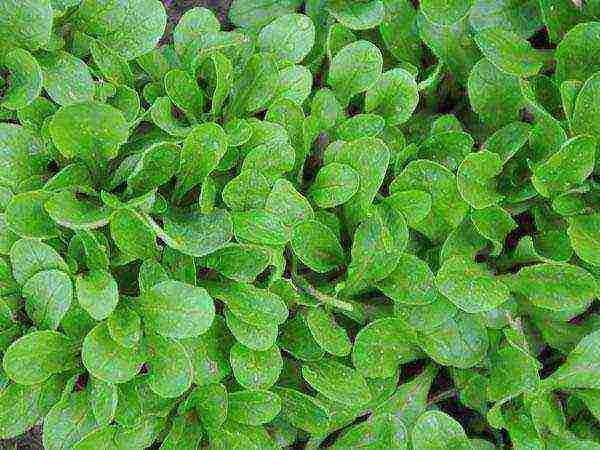
Marsh salad, corn, rapunzel - these are the names for field salad. Small rosettes of glossy dark green leaves. This is a very delicate salad with a spicy, tart taste and nutty flavor.
Seeds are sown from mid-April until frost (when sowing "before winter"). With late sowing, the plant is protected - covered with leaves, compost. Field lettuce is responsive to drained soils, likes good lighting, does not tolerate stagnant moisture. Sowing depth of seeds - 1 cm. Double thinning - first at a distance of 3 cm, then at 10 - 15.
Field lettuce is also grown through seedlings. Plant care is reduced to loosening the row spacing every 2 weeks and weeding in time. The crop is harvested 2 weeks after sowing. The best varieties of salads (from the photo above) - Impromptu.
Rapunzel is also called "nut salad". There are a lot of varieties of it - some of them are eaten like radishes. It goes well with trout, bacon, mushrooms. Field salad makes a wonderful pesto sauce.
Iceberg
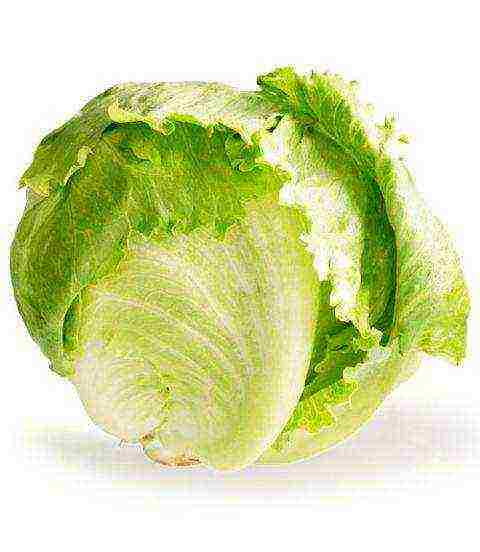
This salad looks like cabbage, as it forms dense heads of cabbage with light juicy leaves. Iceberg's taste is almost neutral, but no salad crunches as amazingly as it does.
The iceberg is sown both by sowing in the ground and through seedlings. Sowing is repeated after 3 weeks during the summer. Prefers lettuce on nutritious, well-drained soil and bright lighting. Withstands slight frosts and is very fond of the cool night. Seeds are sown to a depth of no more than 1 cm. For early sowing, cover with non-woven material.
Iceberg loves constant humidity, but does not tolerate drafts. All plant care is to regularly loosen the soil. Watering the Iceberg is desirable in the evening. Fertilizer is applied only on poor soils. Harvested as the heads of cabbage ripen.The best varieties are Lagunas, Argentinas, Gondar, Campionas, Fiorett.
Juicy crispy Iceberg leaves are widely used in cooking. Since the salad has no distinct flavor, it goes well with almost all dishes. It is good in sour cream sauces and in salads. Exceptional as a side dish for meat, fish, seafood. Made with Iceberg leaves and cabbage rolls. The dense leaves keep their shape well - they serve cooked salads. Mix Iceberg, if desired, with other herbs.
There is no single classification of salads, they are mainly divided into categories: cabbage and leafy. You can also group them according to their taste - bitter and sweet, crunchy and soft, peppery and spicy. There are a lot of varieties of salads, and new varieties appear every year. This article discusses the most popular types of salads - frequent guests on our table.
